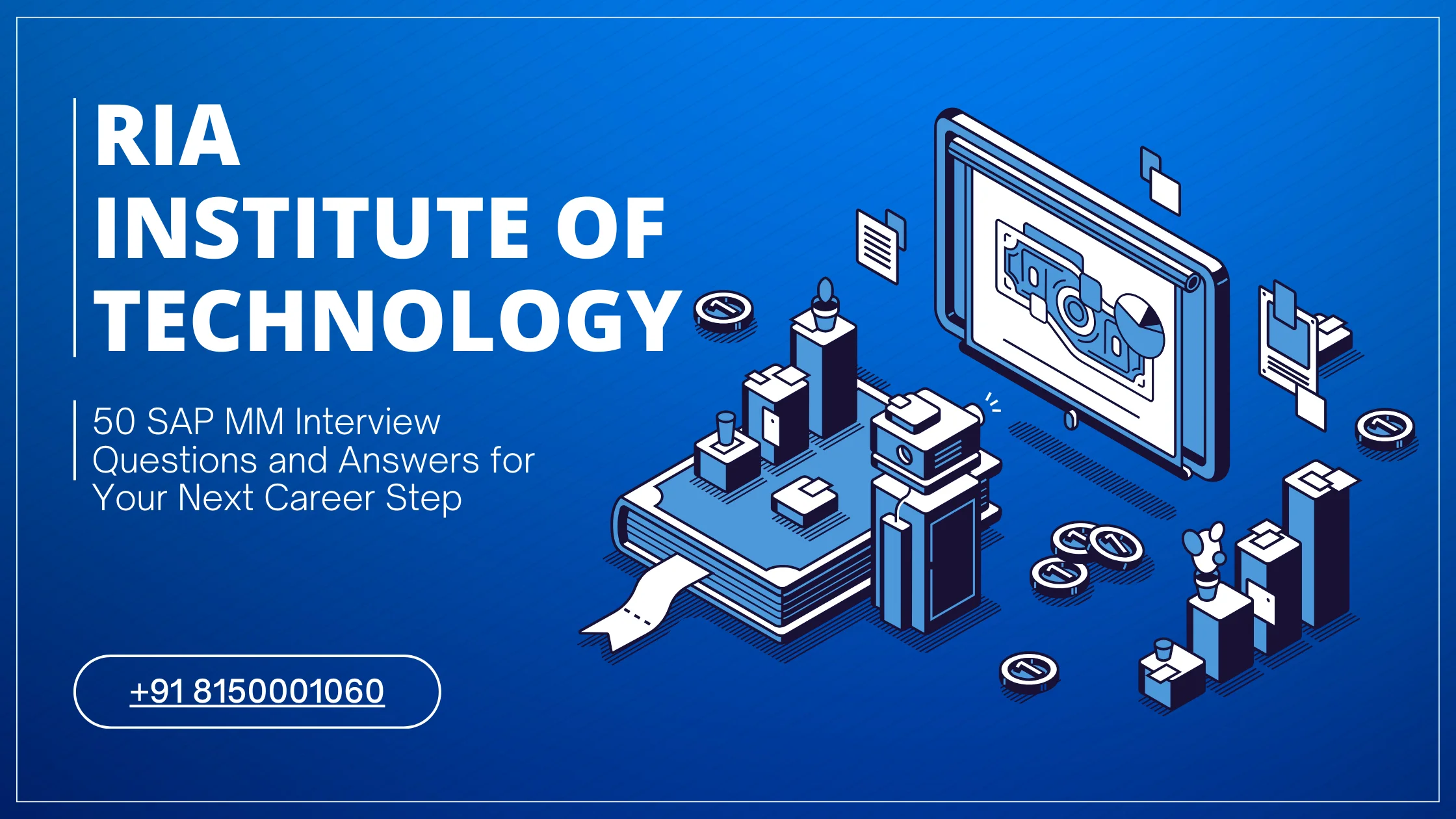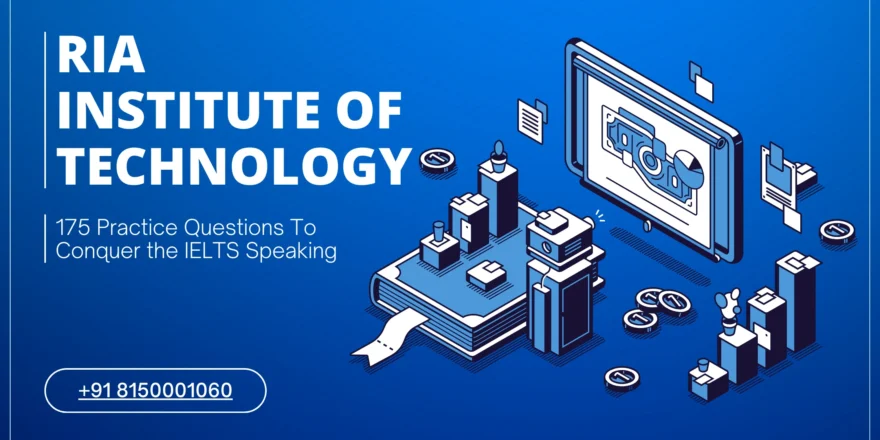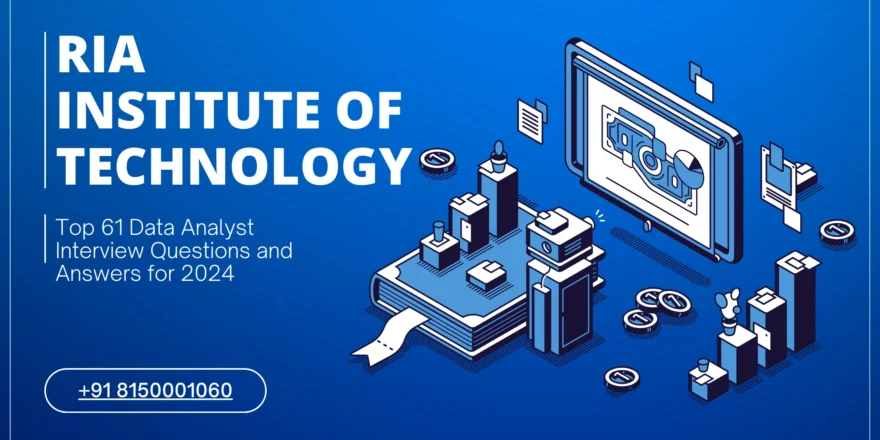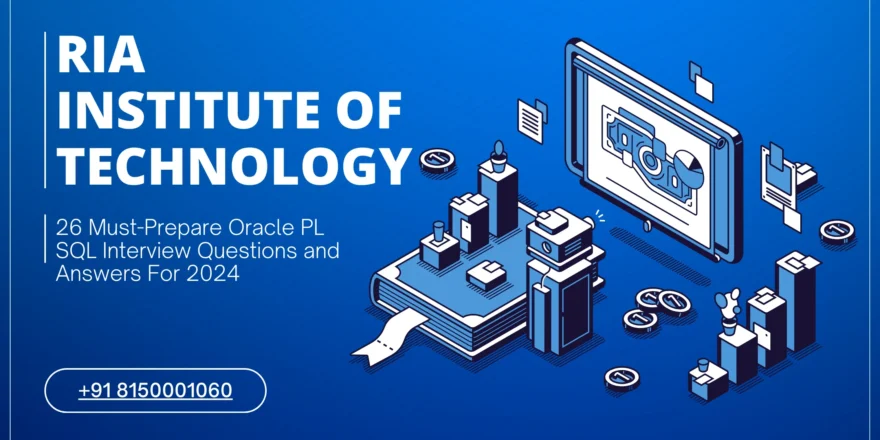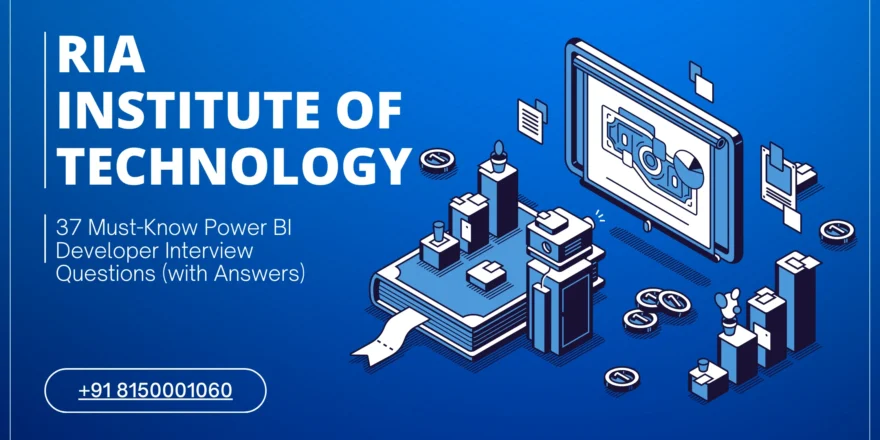1. What is the distinction between a Purchase Requisition and a Purchase Order?
A PR is an internal document that delivers notifications to the purchasing department. When some material needs to be serviced, PR can be generated by any department in need of materials or services. A purchase order (PO) is an official request for materials or services from the seller. Purchase orders are often binding on the purchaser, subject to the terms and conditions stated in the order.
2. What are the different sorts of Information Records?
Info Record kinds include Standard, Consignment, Subcontracting, and Pipeline.
3. What is Consignment Stock?
The vendor’s stock is stored on the purchasing business’s premises, but the company is not liable for it. The corporation is only liable once the goods are issued from consignment stock for usage. Purchasing companies can monitor inventory levels in the system prior to use.
4. What is the Subcontracting Cycle in MM?
Subcontracting involves sending raw materials or input materials to a subcontractor and receiving finished goods. A subcontracting PO is created with item category ‘L’. The input material is forwarded to the vendor for processing using movement type 541. When movement type 101 is used for GR, movement type 543 immediately disposes of the consumed material.
5. What exactly is meant by Scales in MM?
Scales can be used while maintaining prices in information records. This is utilised when the price of a substance varies based on the amount purchased. For example, the price for 500 pieces of material ABC is Rs. 10, while for orders over 500, the price is Rs. 9. Scales are stored in master data, such as information records and quota arrangements, and can be retrieved for use in Purchase Orders.
6. How do I flag a material for deletion?
To delete an item using the Archive and Delete programme, it must be flagged for deletion. Deletion flags can be set at the client, plant, or storage facility levels. Material identified for deletion at any level is also flagged for deletion at lower levels. Transaction MM06 flags a material for deletion.
7. Can a material be used after being flagged for deletion?
Even if a material is flagged for deletion, it can still be used until it is erased. It will simply display a warning notice anytime the material is utilised. To block material for immediate usage, use the material status available in Basic View 1 (general level) or MRP 1 (plant level blocking).
8. What is the function of OBYC?
OBYC is a tcode used to enable Automatic Account Posting.
Inventory Management and Invoice Verification generate automatic postings to G/L accounts for Financial and Cost Accounting purposes.
9. How does the valuation grouping code relate to OBYC?
In SAP, value levels can be set at either the company code or plant level.
Valuation areas are typically used at the plant level to account for variations in valuation. The value grouping code facilitates automatic account determination. To specify a consistent account determination across several valuation areas, assign the same valuation grouping code to each. We can store valuation group codes in OMWD for different valuation zones.
10. What kinds of speciality stocks are available?
SAP supports a variety of unique stock types, including consignment, subcontracting, pipeline, project, sales order stock, returnable transport packaging, stock transfer, and third party.
11. What’s the distinction between contracts and scheduling agreements?
A contract is a long-term commitment to offer materials or services for a specific length of time. The contracts do not have specific delivery dates. Contracts can be of two types. Value or Quantity Contract
Scheduling agreements allow us to specify the quantity to be supplied on specified dates. To get materials, the plant must be registered in South Africa. These materials typically have predictable requirements.
12. How do we establish new SAP transaction codes?
Use tcode SE93 to create new transaction codes.
13. What are the release methods with and without classification?
Release Strategy and Classification:
- PR can be released at both the header and item levels.
- It can be used for internal and external papers.
It can be set to any field available in the structure. CEBAN
Release Strategy Without Classification:
- PR can only be released at the item level.
- It is only suitable for internal publications such as PR.
This technique applies to only four parameters: account assignment category, plant, material group, and PR value.
14. What is meant by “batch”?
A batch represents a subset of a material’s overall stock. It depicts a homogeneous unit with unique specifications. Typically, a batch represents the amount of material produced in a single production run. Batch number uniqueness can be assigned at three levels:
- At the client level, only one batch number can be assigned per client.
- At the material and plant combination level, the same batch number might be allocated to materials with varying specifications across plants.
Batches given to a material number have the same specifications throughout all plants where it is extended. Each batch number might be allocated a different specification based on the material.
15. How do you manage free things in a purchase order?
When generating a PO, select “free item” in the item overview section. The price will be zero for the item indicated as free.
16. What information is stored in the Accounting View of Material Master?
The accounting view is a plant-specific perspective. It includes vital information like appraisal class and pricing control. The valuation class assists in choosing the appropriate GL account for account posting. It’s also used to configure OBYC parameters. The price control indication decides whether materials are maintained at standard (S) or moving average prices (V).
17. What are the applications of material types?
The term ‘Material Types’ refers to groups of materials that share common features. It facilitates the maintenance of material master data for a specific substance.
Material types allow us to specify needed views, fields, and material number ranges.
18. What is the purpose of ‘Partner Functions’ for a vendor?
Partner Function defines the tasks and duties of other company partners. Some partner roles are AZ (Alternate payee), CR (Carrier), OA (Ordering address), GS (Goods supplier), and PI (Invoice presented by).
19. What is the purpose of ‘Material Status’?
Material Status helps determine a material’s usefulness. The two-digit code might indicate plant-specific, cross-plant, or distribution material status.
20. What is the ‘Price Control Indicator’?
The ‘Price Control Indicator’ in accounting determines how a material is valued. The price can be either standard (S) or moving average (V). If the indication is set to S, all inventory listings are made at the standard price in the material master. Variances in transactions due to differing prices are recorded in the price difference account.
If the price control indicator is set to V, the products received will be at the GR price. The moving average price will be modified in the material master using a weighted average algorithm. If the posted price for products or invoices differs from the moving average, the difference is recorded in the stock account.
21. What are the different types of stock transfer?
“Stock transfer” refers to the physical moving of stock between sites. Stock transfer can be a one- or two-step process. Various Stock Transfers are:
- Intercompany (Company to Company)
- Interplant/intracompany (plant-to-plant)
- Intra-plant (storage location to storage location)
22. What are the various stock types?
In SAP, commonly used stock types include:
- Unrestricted Stock (Available for usage)
- Restricted Stock: Quality Inspection Stock (not unrestricted stock, but eligible for MRP).
- Blocked Stock (Stock denied due to quality or manufacturing)
GR Blocked Stock (stock that has been accepted under certain conditions). Not the unrestricted stock.
23. What are the different techniques for counting physical inventory?
Physical Inventory Procedures in SAP MM are as follows:
- Periodic Inventory: All stocks are counted on a specific date.
- Continuous inventory refers to stock counts that continue throughout the fiscal year.
- Cycle counting is done at defined intervals.
Inventory sampling involves physically counting randomly selected material stocks on the key date of the balance sheet. Small deviations are assumed to indicate accurate book inventory balances for other stocks.
24. What is the purpose of ‘Split Valuation’?
When valuing a material, it may be necessary to evaluate multiple stocks individually. It could be due to differences in origin, quality, or prestige. We employ split valuation in such circumstances. Material is maintained in multiple partial stocks, which are subsets of the primary material stock. Transactions related to valuation are recorded at the partial stock level. Accounting defines the requirement for split value of materials.
25. What are the different stock valuation methods?
Stock revaluation can be done using three methods:
- LIFO (Last In First Out) refers to materials that were received last and used first. Consider a lift where passengers enter the last exit first.
- FIFO (First In, First Out): The materials received first are used first.
The Lowest Value Method values stocks at their original or current market price, whichever is lower.
26. How do you configure ‘Automatic Account Assignment’ in MM?
After completing the OBYC settings, the system uses the following data to identify the appropriate G/L account:
- Chart of Accounts: The Chart of Accounts is determined based on the plant or company code used in transactions.
- Valuation Grouping Code: It is decided according to the valuation area. The Valuation Grouping Code is stored in tcode OMWD.
- Transaction Key: e.g., BSX, GBB. Transaction keys are automatically generated based on the transaction type (e.g., invoice verification or inventory management).
- Account grouping and modifiers are only applicable for offsetting entries, consignment liabilities, and pricing disparities.
Material valuation class or valuation type (in the case of split valuation): The valuation class enables automatic account determination based on material. To achieve this, assign different valuation classes to materials in the material master (Accounting view) and allocate separate G/L accounts to posting transactions for each valuation class.
27. What are the ‘Transaction Keys’ while configuring OBYC?
Each movement type is allocated a ‘value string’, which is then associated with a transaction key. The goods movement determines the appropriate transaction key. Transaction Keys are predefined in the system for publishing transactions in Inventory Management and Accounting, including invoice verification.
Examples of preconfigured transaction keys include:
- BSX (Inventory Postings) and WRX (GR/IR Clearing Postings).
- PRD (cost-price differences)
- UMB (Revenue/Expenses From Revaluation)
- GBB (Offset entries in stock postings)
BSX, WRX, and PRD apply to a purchase order for a material with conventional price control. When the standard price changes, the transaction key UMB is used to publish the change to the prior period. GBB identifies the GL account to post offsetting entries to the stock account, such as miscellaneous product receipts, sales orders without account assignment, scrapping, etc.
28. What is a Business Area?
A business area is an organisational unit in financial accounting. It refers to a specific business sector or area of responsibility where value movements in Financial Accounting might be ascribed. It is often derived automatically by linking to other organisational units. For example, tcode OMJ7 maintains the business area for a plant and division combination.
29. What is a cost centre?
Cost centre accounting is used for control objectives. An organisational unit inside a controlling area represents a specific location of cost incurrence. A department can serve as a cost centre, recording all associated expenses.
30. What is a profit centre?
Profit Centre Accounting assesses the profit or loss of separate sectors within an organisation. A profit centre is an organisational unit in control that helps recognise profits. The profit centre is linked to the material master at the plant level.
31. How can I establish a Tax computation procedure in MM?
Tax can be calculated independently for each line item on a PO using the tax code.
Previously, TAXINJ, which is a formula-based tax method, was used. TAXINN, a condition-based tax method, is widely utilised. The tax method specifies the condition type and its corresponding specifications. Account keys are assigned to condition categories, and the G/L is determined to post the tax amount (OB40).
Account keys are maintained with tcode OBCN. (All transactions are located in Financial Accounting Global Settings >> Tax on Sales/Purchases >> Basic Settings). Tax codes are issued to nation codes, which are linked to tax procedures. The tax code determines the associated tax method, which is subsequently calculated using condition types.
32. How is scrap material handled in subcontracting?
- Scrap in a BOM can be classified as operational, component, byproduct, or coproduct.
- Scrap is typically stored as a byproduct and returned alongside processed material.
33. How are byproducts handled in subcontracting?
When creating a BOM using CS01, we can keep primary components with +ve amounts and By Products/Scraps with -ve quantities.
When you create a Goods Receipt for Subcontracting Purchase Order with movement type 101, the components are immediately consumed with movement type 543. Products and scrap are updated as stock is given to the vendor for movement type 545.
To return scrap/by products to the company’s inventory, use movement type 542 (reversal of 541) and tcode MBO1B.
34. What are the common movement kinds in the Subcontracting process?
- 541 – Transfer of products from warehouse to subcontractor’s inventory
- 542 – Reversal of products issued from warehouse to subcontractor’s stock.
- 543 – Consumption of subcontracting stock (automatically updated during GR)
- 544 Coproducts received.
- 545 Goods: receipt of byproducts from subcontracting (stock given to vendor).
- 101 – Finished/subcontracted goods received after processing.
35. What accounting entries are used in the conventional subcontracting process?
Accounting entries for conventional subcontracting are as follows:
Regarding final items received:
- Debit stock account for assembly (FG) (BSX)
- Credit Change of Stock (BSV)
- For the amount payable to the vendor:
- Debit SC/JW charges (FRL).
- Credit: GR/IR (WRX)
- For materials delivered to the vendor:
- Debit Consumption Account of Components (GBBVBO
- Credit stock account for components (BSX)
To account for pricing differences in subcontracting, use the PRD transaction key.
36. What are the potential procurement type settings in Material Master?
The procurement type is maintained in the MRP1 view of the material master. This is a plant-specific perspective, as MRP is conducted at the plant level. Material master offers the following procurement types:
- In-house Production (E).
- External Procurement (F)
- No procurement
- Both procurement types (X)
37. What are the prerequisites for a ‘MRP run’?
- MRP needs to be enabled in that plant.
- Master data for MRP should be preserved (e.g., planning calendar).
- MRP data for materials must be kept.
- MRP1 view should be retained (for example, reorder point, safety stock, etc.).
- MRP2 view should be retained (for example, planning delivery time, etc.).
- MRP may be run with MD03.
38. What is an MRP Area?
MRP Areas are organisational units that can plan material requirements independently. MRP Areas are classified into three types:
- Plant MRP Area
- MRP areas for storage locations
- MRP areas for subcontractors.
After defining MRP areas, they are assigned to materials in the material master.
39. What is the MRP list?
The system generates MRP lists during the planning run. The MRP list reflects future stock/requirements as of the last planning run. The MRP list is stored in the system until manually destroyed or replaced by a new list during a subsequent planning run.
40. What are the MRP techniques in Consumption-Based Planning?
The MRP procedures at CBP are as follows:
- Reorder Point Procedure
- Forecast-Based Planning
- Time-phased material planning
41. What’s the distinction between standard and reference purchasing organisations?
The Purchasing Organisation is a Logistics organisational unit. Provide a uniform purchasing organisation to factories with direct procurement responsibility.
A purchasing organisation works with a reference purchasing organisation to get centrally agreed-upon contracts and release orders.
42. Why do we employ document types in SAP?
Document kinds are used to distinguish the business transactions that will be posted. It also aids in identifying account types and subsequent transactions to finish the process. Document types are defined at the client level.
43. Is it possible to get items earlier than the stipulated delivery date in the agreement?
No, we cannot receive the goods before their specified delivery date. GR may be posted on or after the specified dates. However, SAP has published OSS notes to address this. (708973, 741385)
44. Can changes be made to the PO once it is released?
This can be regulated by adjusting the release indicator in the PO release procedure. Any significant changes will restart the approval process.
45. What is the purpose of the ‘Info Update’ indicator in purchasing documents?
This indication determines whether to create or update the information record based on the purchase document.
46. What is a Material Ledger (ML)?
A material ledger records all transactions related to purchasing and using materials for production purposes. Material ledger data provides valuation and control information for a material in a plant for a given posting period. The material ledger tracks relevant material moves for appraisal purposes.
47. What is a ‘return delivery’?
Return Delivery allows us to return items to a vendor due to quality or packing issues. Typically, return delivery is done using movement type 122. When creating a return delivery, specifying the cause for the return is necessary.
48. How to disable a vendor to prevent additional transactions?
Vendors can be prohibited at the following levels:
- Company codes can be either all or single.
- There are two options for purchasing organisations: all or single.
49. What is the EAN?
An article can be transported in various units of measurement. Each unit of measurement is assigned a European article number (EAN) to identify it uniquely.
EANs are primarily used to identify articles at the point of sale (POS) via barcodes.
50. What are the basic tables utilised in Material Master?
Some of the fundamental tables utilised in Material Master are:
- MAKT: Material Descriptions.
- MARA – General Material Data
- MARD: Storage Location Data for Material.
- MVER = Material Consumption
- MARC refers to material plant data, while MVKE is material sales data.
- MAST: Material-to-BOM connection
- MARM (Unit of Measurement)
- MBEW: Materials Valuation

